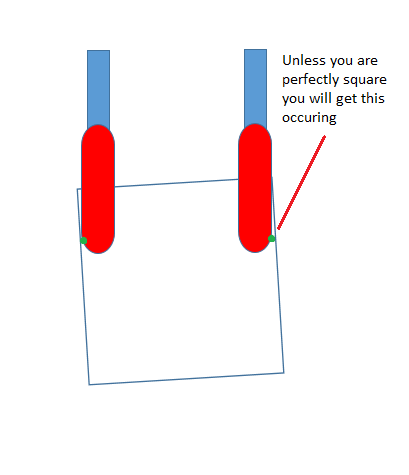Your Products have been synced, click here to refresh
Your Products have been synced, click here to refresh

We generally use a cylindrical stylus for inspecting threaded holes. The tip is a .5mm X 15.25 carbide cylinder stylus (Renishaw P/N A-5003-1210). This is because we generally have hundreds of holes to check.
This is not the most accurate way to check threaded hole locations because you are picking up the minor diameter of the thread and if the hole is crooked you can still shank out inside the hole (See Ninjas Graphic above). I would never just use a ruby ball inside a threaded hole because the ball will fall in between the threads on one side of the hole while it may hit the "peak" of the thread on the other side of the hole. Therefore, the measure would definitely be incorrect. Also, bear in mind that we are inspecting precision machined parts. Where there is less chance of the hole being significantly crooked.
There are inserts you can buy that you screw into each hole leaving a cylindrical protrusion. Then you can use a ruby ball stylus to pick up the location of each cylinder. See MSC P/N 84344027 as an example. It's called a true position tapped hole gage. This (IMO) is the best way to pick up threaded holes if you only have a few of them to measure.
HTH,
t.
@Ninja - Is that what you use? I didn't even know that option was there.
Yeah, with the largest tip possible.
Watch out for direction on internals and externals, and also the CW/CCW setting in the Auto Feature dialog! (i.e. check visually it's spiralling the right way)
As someone mentioned there are special inserts you can get which are better, but for most stuff the Pitch function is more than adequate, and better than the alternatives.
| © 2024 Hexagon AB and/or its subsidiaries. | Privacy Policy | Cloud Services Agreement |